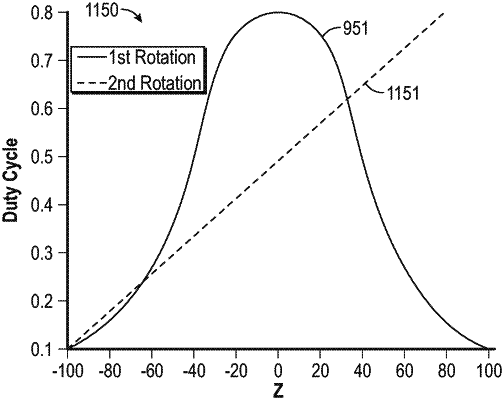| CPC G02B 5/1857 (2013.01) [H01J 37/3056 (2013.01)] | 20 Claims |

|
1. A method comprising:
exposing a first material disposed across a first plane on a first substrate during a first time period to an ion beam to form a first plurality of structures in the first material, the ion beam directed at the first material at an ion beam angle ϑ relative to a surface normal of the first substrate, wherein
the first substrate is positioned at a first rotation angle ϕ1 between the ion beam and a first vector of the first plurality of structures during the first time period,
the first vector is perpendicular to a direction in which the first plurality of structures extend across the first plane,
the first material is exposed to the ion beam incrementally along a first direction during the first time period, and
exposure of the first material to the ion beam is varied along the first direction to generate a depth variation between the first plurality of structures in the first direction; and
exposing the first material disposed to the ion beam during a second time period to modify the depth of at least some of the first plurality of structures, wherein
the substrate is positioned at a second rotation angle ϕ2 between the ion beam and the first vector of the first plurality of structures during the second time period,
the second rotation angle ϕ2 is the negative angle of the first rotation angle ϕ1.
|